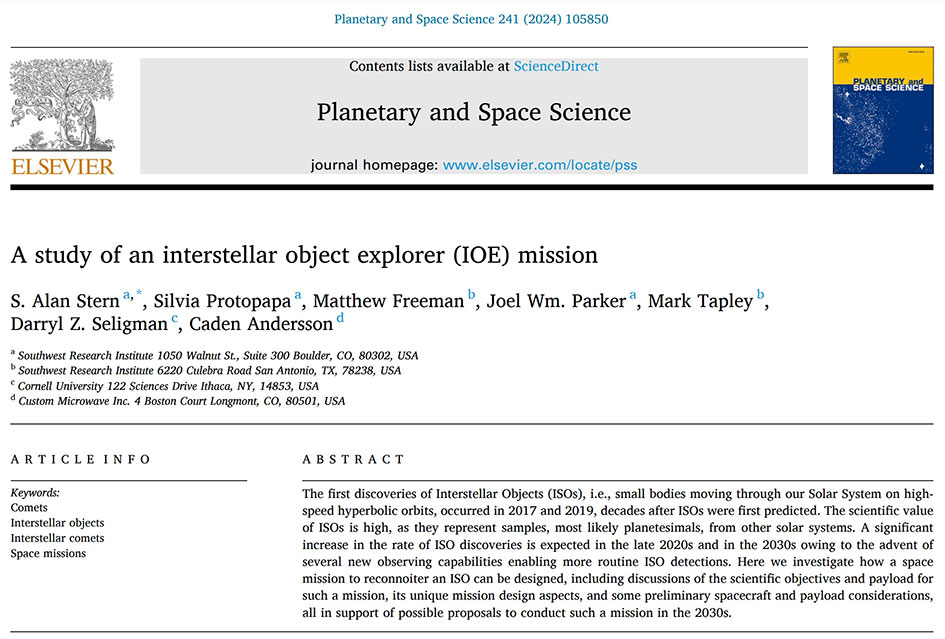Background
After many years of theoretical predictions for their existence, the first interstellar comets (ISCs) were detected in 2017 and 2019 with the discoveries of ISCs `Oumuamua and Borisov, respectively. New astronomical facilities coming online are expected to detect many of them over the next decade. ISCs are scientifically exciting and cannot be studied in detail except by space missions to reconnoiter them at close range. However, such a mission has unique design challenges unlike all past planetary space missions. This IR seeks to mitigate these challenges, reduce mission and proposal risks, and enable SwRI to deliver a proposal to NASA and potentially win such a mission.
Approach
A series of specific research and programmatic tasks necessary to define and establish the feasibility of a NASA-funded mission to an ISC were identified. These include four research and two programmatic tasks: (R1) mission trajectory design, (R2) science definition and science traceability matrix (STM) development, (R3) payload instrument complement selection and specifications definition, (R4) spacecraft requirements and concept development, (P1) project costing, and (P2) results publication.
Accomplishments
The project successfully completed its sixth task this year, publication of “A study of interstellar object explore (IOE) mission,” in the February edition of the journal of Planetary & Space Science. With the successful completion of this task, the team successfully closed the project.

Figure 1: Information and abstract for the published article in the February 2024 edition of Planetary and Space Science.

